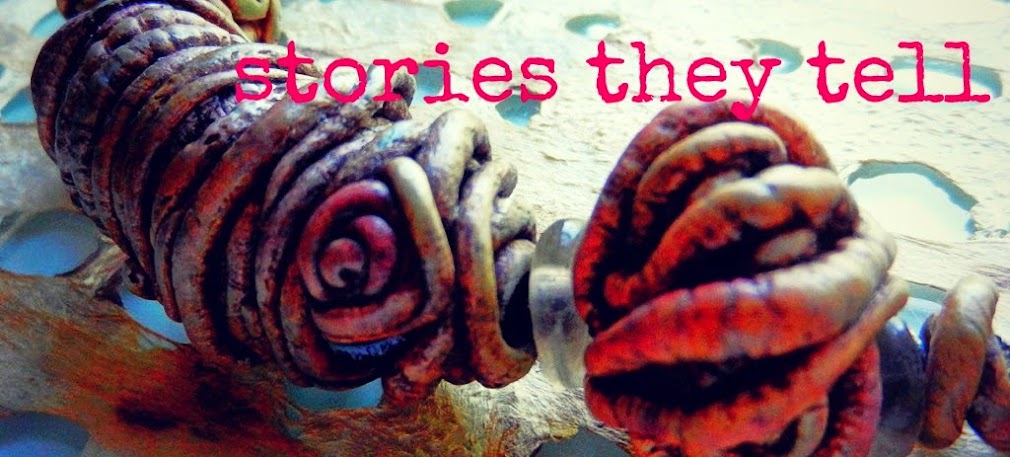“Idiosyncrasy” – a mode of behavior or way of thought
peculiar to an individual:
It’s been an interesting few months. Notice how people
use the word ‘interesting’ when they don’t know exactly how to define events,
people and situations that defy categorization. When your perception of the
world is rocked, ‘interesting’ is a place-holder expression, useful until you
can finally sort out what’s really happening.
I spent most of the summer and fall severely questioning
my perception of myself as an artist and teacher after this Spring's Art on the Farm
class sessions at my home. Several of my students were cantankerous (to
say the least) and others just didn’t seem to ‘get it’. A couple of them
actually wrote me e-mails telling me how I should have improved or changed the
class. I feel I have a modest reputation out there in the polymer clay world
and when students come all the way to Vermont to learn from me, I expect they
may have certain expectations about the instruction. I welcome positive (emphasis
on positive) input and always want to improve my classes and teaching. But I
was very careful to explain in several pages on my website what it was that I
was teaching, as well as the philosophy behind the techniques and processes.
I’m not just teaching pretty ways to color clay. I don’t want to send you home
with exact copies of what I make. There are already plenty of teachers out
there who are teaching classes featuring stand-alone polymer techniques and that’s
fine. It’s just not me.
Every day I read a feed from Seth Godin, an entrepreneur, marketing genius and culture analyst who always gives me a fresh perception on the world of business and how it and our culture are rapidly changing in the 21st century. Today the post was called “Idiosyncratic” and he talks about how “the
people at the edges, the people who care, are drawn to idiosyncrasy, to the
unpredictable, the tweakable, the things that might not work.” He mentions that
perfection might just be boring.
I totally agree. I started applying surface design and
paint to polymer because I was bored with smooth surfaces and then applied texture
because I wanted a more sculptural canvas to embellish. I wanted more 'art' in my
jewelry approach. I wasn’t sure it would work, any more than I
am sure every time I step into my studio that I will find success with any
innovation or new tweak to a familiar process.
And I have come to realize, in these past few months,
that this is what I have to teach—idiosyncrasy or, actually, how to express your individuality. Making
it your own. It’s really what defines an artist. I don’t see myself as a
polymer rebel—I don’t want everyone to change the way they make art or overturn
the status quo, but I do want to reach the people who are craving innovation
and want to step out on the ‘skinny branches’ to discover what may or may not
work. People who are ready to challenge themselves to change up how they have
been working before, to seek the true expression of their ideas, to learn to love
what they create, even if the world may not.
So I’m looking for a few good students who are ready to
do amusing exercises as homework when they sign up, to free up their
perceptions and get their brains ready to work. People who will arrive without
expectations about what they will be taught and how, who will take
responsibility to create value for themselves. Explorers who will embrace the
word ‘idiosyncratic’ and not feel it’s a dirty word. Seekers who will fully
engage in the work and not expect to be spoon-fed all the answers.
So if that’s you, visit my website
www.storiestheytell.com, read the pages concerning my teaching philosophy and
then contact me and I’ll send you an application for next Spring’s Art on the
Farm workshop. You’ll read all about me and then I’ll also know all about you
and what you intend to get from the class. Maybe we’ll find our idiosyncratic
way together.